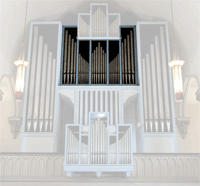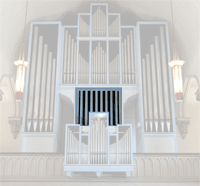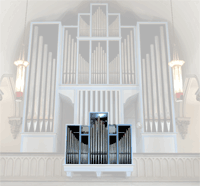|
||||||||
 |
florence mustric |
|---|---|
oRganist |
|
|||||
The Beckerath organ at Trinity Evangelical Lutheran Church It was built in 1956 in Hamburg, Germany by Rudolph von Beckerath, who crafted it in the tradition of the organs of northern Europe in the Baroque era. With this organ, Beckerath demonstrated that centuries-old techniques of organ-building produce a beautiful sound that is transparent and powerful yet warm. Ideal for Baroque repertoire, this organ also serves music of many other styles and periods. It has inspired more than one generation of builders, organists, and music lovers. E. Power Biggs was the first to visit the Beckerath, on March 28, 1957. He offered “most hearty congratulations on this wonderful instrument! Where else can one find an organ to equal this [in] tonal excellence.” This organ has 3,467 pipes arrayed in 65 ranks in 5 divisions,
with a
keyboard for each division: Ranks of pipes are engaged by pulling stop(knob)s at the console.
A stop typically controls 1 rank, with 1 pipe per key: The specifications of this organ are given below. Here‘s a translation.
The name of the stop indicates which family it belongs to: The number by sounding at other overtones (12th, 17th). A Roman numeral indicates 2 or more ranks. The (II) stops |
|
||||
Pedal
Rückpositiv |
 |
Kronpositiv
Schwellwerk
Couplers |
 |
||
 |
 |
||||
 |
|||||
uuu©2007 text by Florence Mustric/Photography by Joe Glick Photography |
|---|